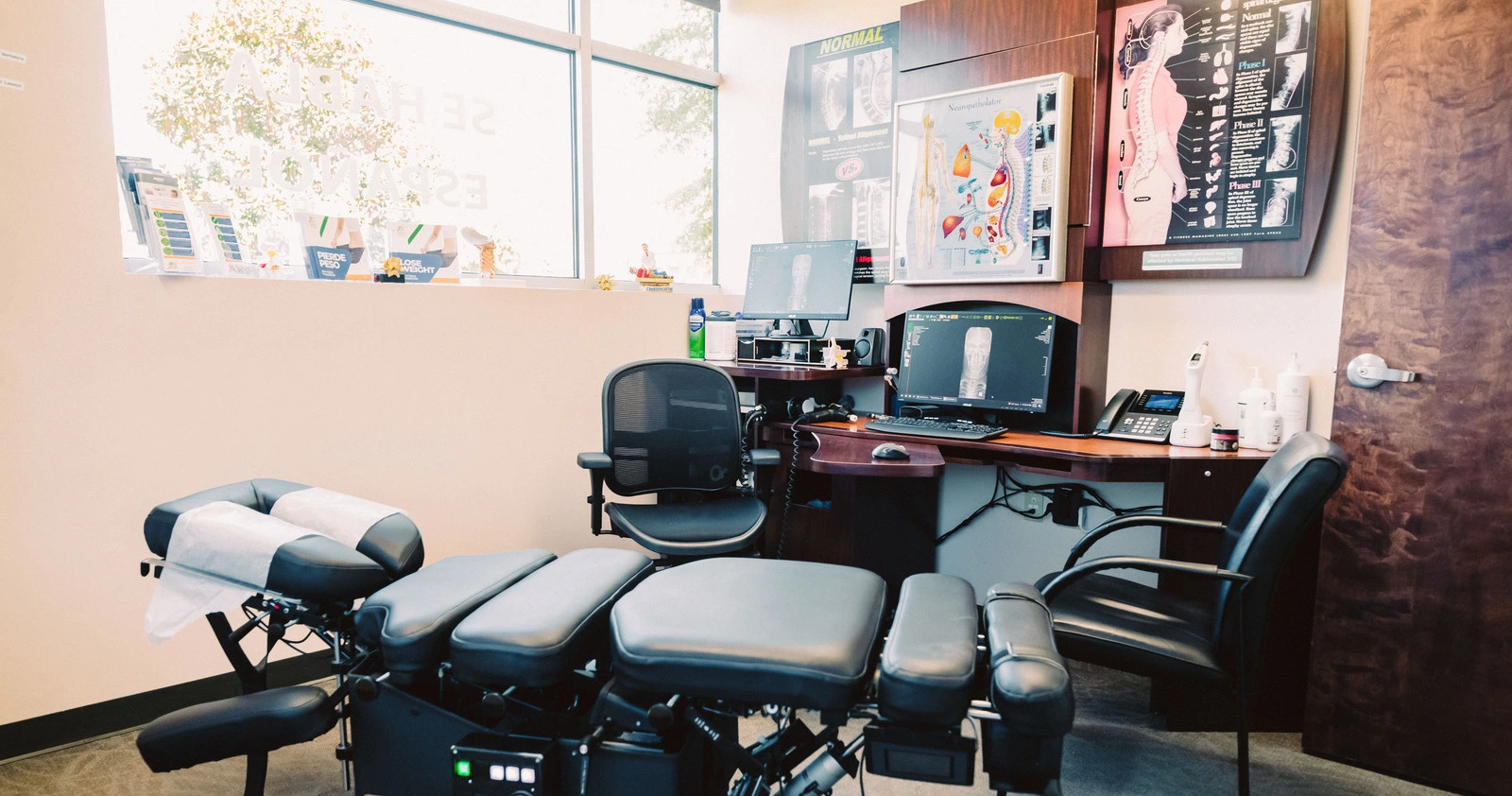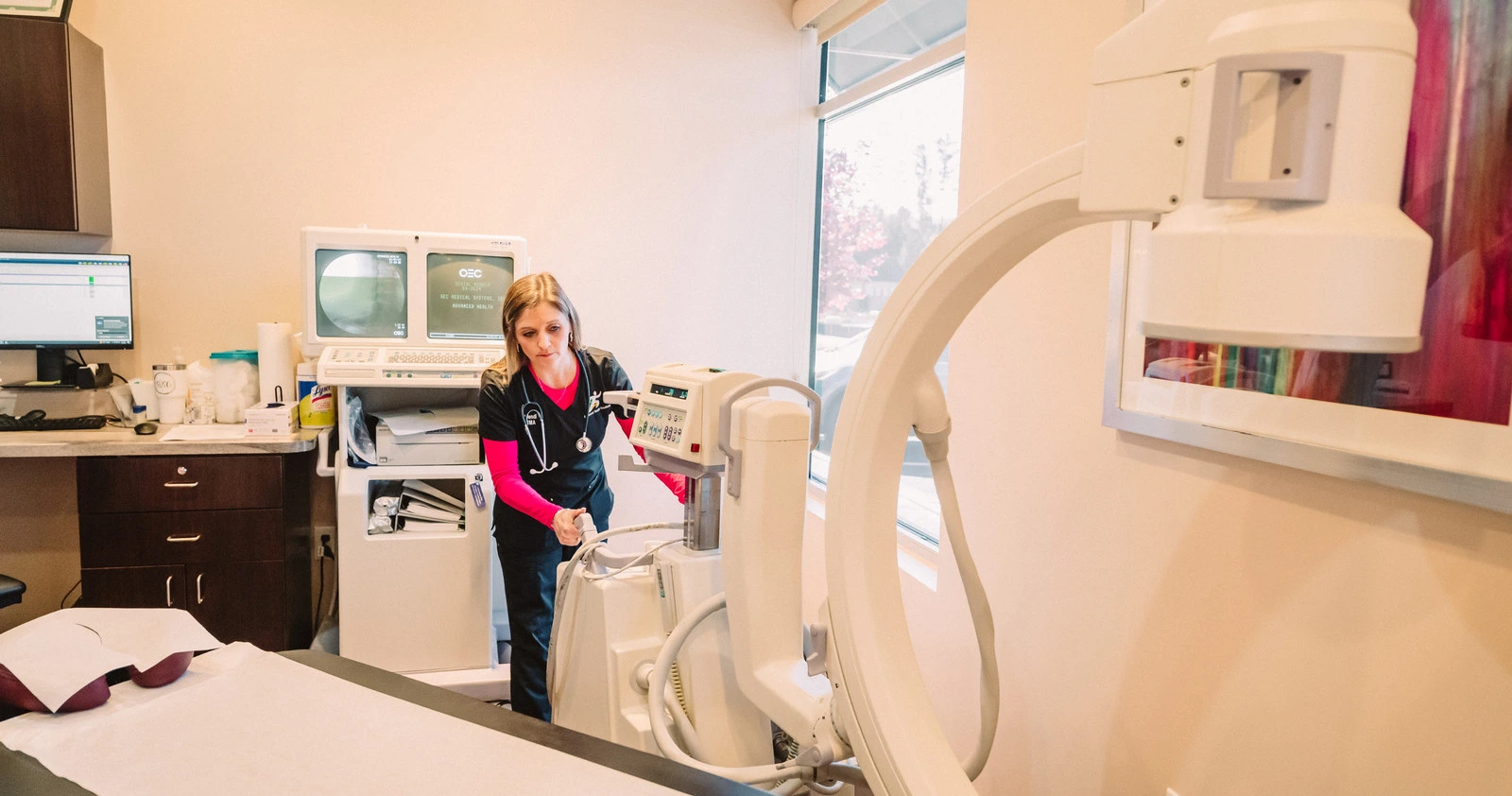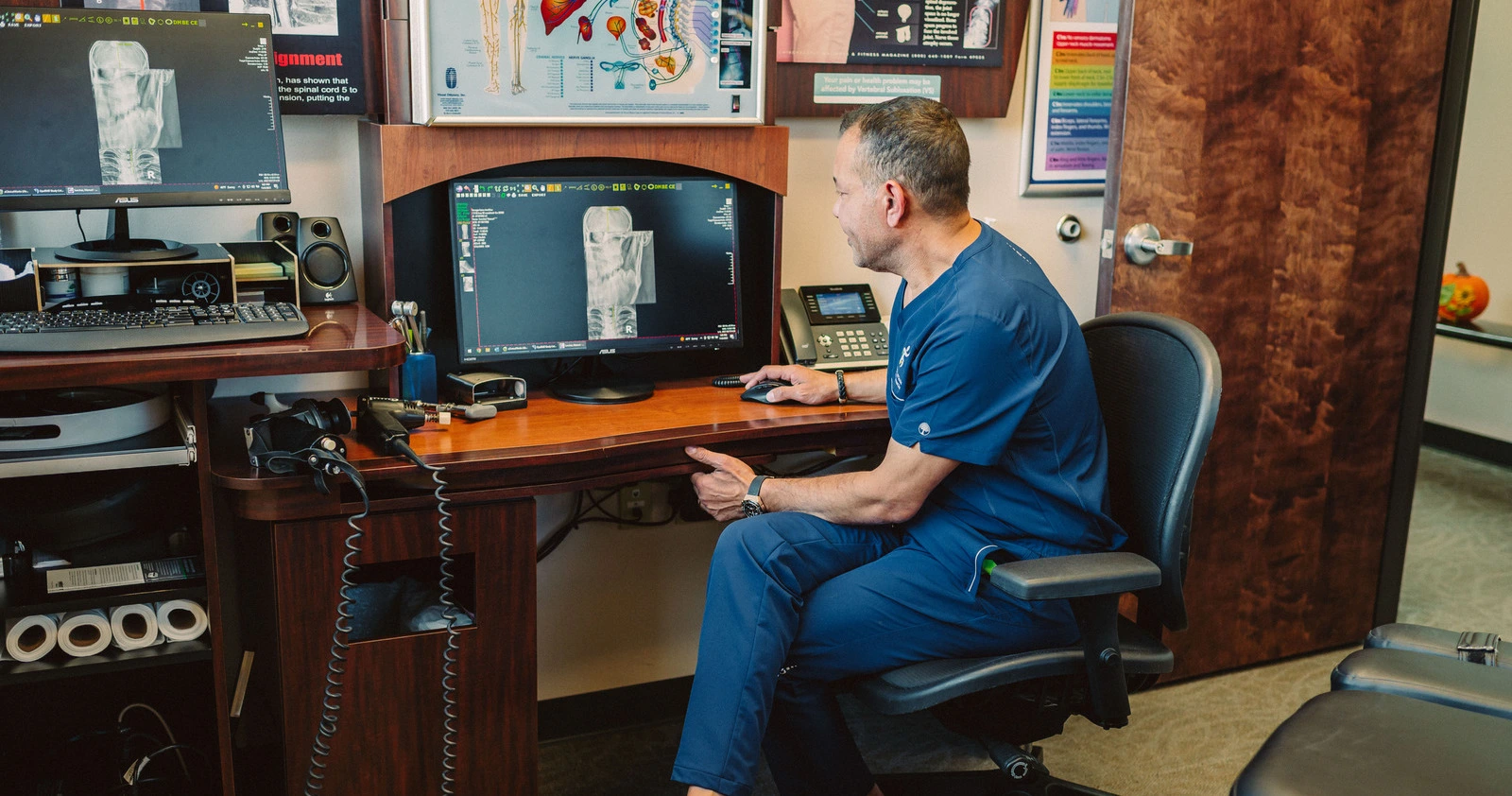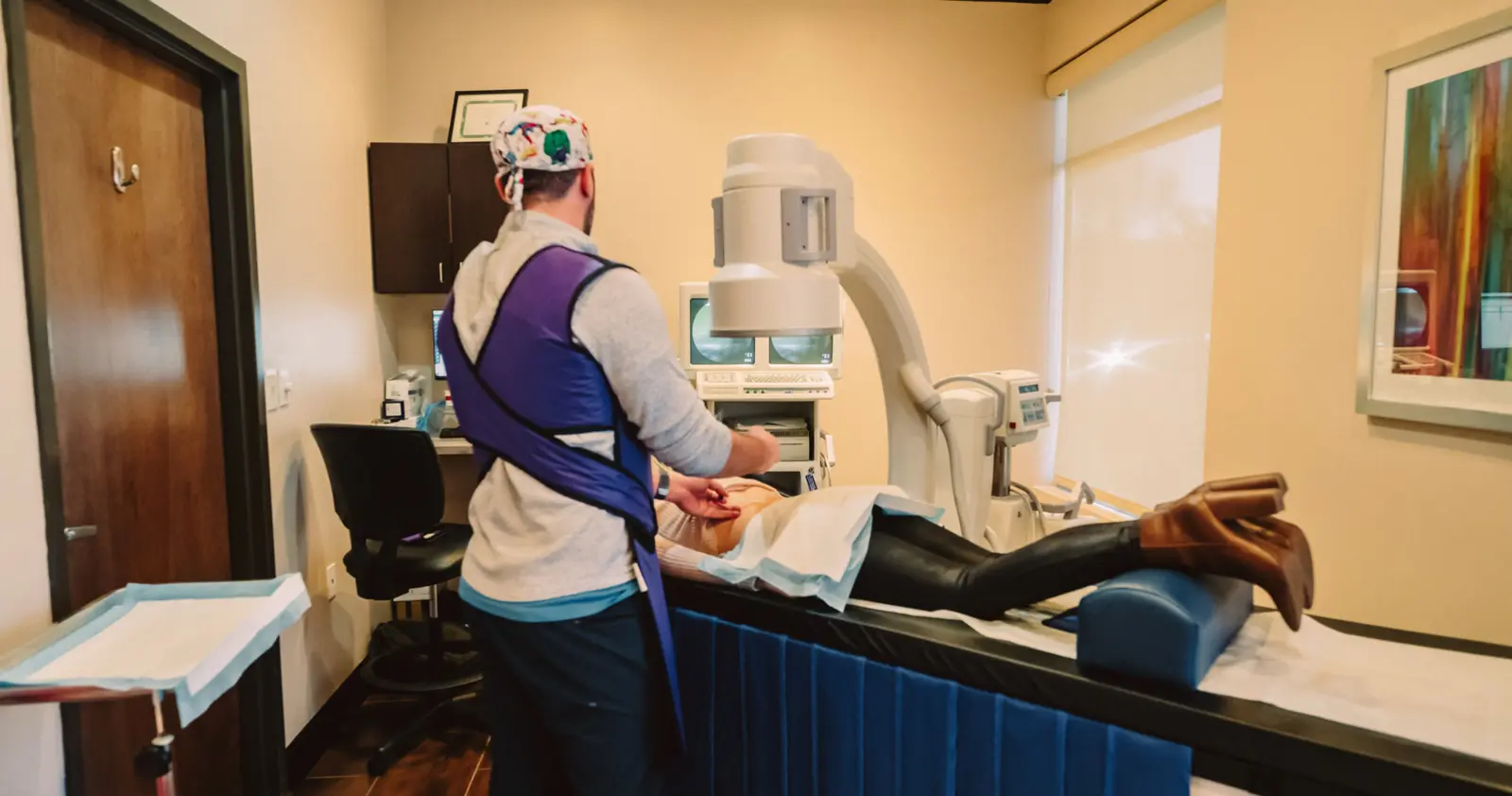
At least 70 million adults in the United States deal with some type of chronic pain. In fact, lower back pain is the second most common reason Americans see their doctor. Many people are seeking alternatives to conventional medication for pain relief and therefore, they visit a chiropractic care clinic for an alternative/complementary treatment. Chiropractic treatment is one potential pain management option, especially if you are dealing with back pain or neck pain.
What Is Chiropractic Care?
Chiropractic care is a form of complementary medicine based on the idea that your body can heal itself with the help of specific hands-on manipulations from a trained health care professional. These manipulations help realign your joints and can potentially lead to pain relief.
Chiropractic treatment may help relieve pain from conditions affecting your:
- muscles
- joints
- bones
- connective tissue
- cartilage
Chiropractic treatment often focuses on your spine but may focus on other parts of your body depending on the issue you are dealing with. It has some similarities with physical therapy, and certain conditions may benefit from being treated with both types of therapy.
Generally, though, chiropractors are more likely to use hands-on manipulations to relieve your symptoms. Physical therapists tend to put a bigger emphasis on rehabilitating injuries with stretches and exercises.
Common Conditions Treated with Chiropractic Care
Chiropractic treatment addresses damage, disorder, and misalignment of the joints, particularly along the spine. Chiropractic care can treat a wide variety of conditions since it can correct both localized joint issues and your general posture, which can influence your overall well-being, especially your nervous system.
- a) Arthritis – Rheumatoid arthritis results from an immune system disorder, while osteoarthritis is the result of tissue degeneration due to aging, hormonal issues, or vitamin deficiencies. Chiropractic care can help treat both types of arthritis by manipulating the joints and working to restore patients’ mobility.
- b) Back problems– Patients may visit a chiropractic care clinic to seek chiropractic treatment for general discomfort, postural issues, localized pain, or more complex conditions such as fibromyalgia, a chronic musculoskeletal issue.
- c) Neck pain– Your neck is one of your most important yet delicate body parts. It consists of seven small vertebrae, which chiropractors refer to as the “cervical spine.”
- d) Headache– If you suffer from tension headaches, your chiropractor can help by identifying trigger points in your neck muscles. Trigger points may include the Suboccipitals, the Splenius muscles, the Trapezius, and the Sternocleidomastoid.
- e) Musculoskeletal conditions – Chiropractic care adjusts the body’s joints and overall alignment to help correct a variety of musculoskeletal conditions. Your chiropractor may be able to assist you if you suffer from any of the following:
| · Carpal tunnel syndrome | · Epicondylitis |
| · Plantar fasciitis | · Sprains |
| · Tendinitis | · Strains |
| · Ligament injuries | · Whiplash |
| · Fractures | · Myelopathy |
| · Complex Regional Pain Syndrome (CRPS) | · Frozen joints |
| · Stroke | · Muscle, joint, or ligament tears and pulls |
| · Dislocation | · Shin splints |
| · Herniated discs | · Medial Tibial Stress Syndrome (MTSS) |
| · Scurvy | · Scoliosis |
| · Osteoarthritis | · Ruptured discs or tendons |
| · Chronic discomfort |
Who Is a Good Candidate for Chiropractic Treatment?
For individuals seeking an alternative treatment for musculoskeletal pain or related health conditions, you may visit your local chiropractic care clinic to try chiropractic treatment. However, not everyone is a good candidate for chiropractic care.
The following factors are good indicators that chiropractic care may be a beneficial treatment option for you:
- Musculoskeletal pain or related concerns – Individuals with back pain, neck pain, pain in other joints or muscles, headaches, or health conditions such as osteoarthritis and fibromyalgia may be good candidates for chiropractic treatment. Those looking to improve joint mobility may also benefit from chiropractic care.
- Interest in alternative treatments – In addition to manual adjustments, a chiropractor may incorporate alternative treatments, such as acupuncture, nutritional counseling, or homeopathy, into your treatment plan. A good candidate should be open to these possibilities.
- Ability to sit or lie down and move into different positions – Sitting or lying down on a padded table is required during spinal or joint manipulation. The ability to move into different positions allows the chiropractor to treat different areas of your body.
- Discipline to do homework – Chiropractors often prescribe exercises, stretches, or other activities to be done at home between appointments. You should be willing to put in this effort to achieve the best possible results.
- Insurance coverage for chiropractic treatment or ability to pay out of pocket – Not all medical insurance companies cover chiropractic treatment. You should check with your insurance provider to determine coverage and any copays or deductibles. The chiropractor can also provide self-pay pricing.
Some individuals are not good candidates for chiropractic care, especially spinal manipulation. This includes individuals who:
- are at an elevated risk of stroke
- have osteoporosis
- have inflammatory arthritis
- take blood-thinning medications.
- have spinal cord compression
- have a history of cancer
In addition, certain chiropractic treatments have contraindications. For example, spinal decompression therapy, in which the spine is stretched, is not recommended for individuals with broken vertebrae, individuals who have had spinal fusion or an implant in the spine, or pregnant women.
Chiropractors conduct a thorough medical history and physical examination before treatment. If necessary, they may also utilize diagnostic imaging to determine if treatment is appropriate.
What to Expect During a Chiropractic Session
Knowing what to expect during a chiropractic treatment session can make the appointment less stressful and more comfortable. The first appointment generally consists of medical history, a physical exam, and the first treatment.
Follow-up appointments typically involve a variety of chiropractic treatments tailored to your condition as well as a re-evaluation of your symptoms.
The First Appointment
During your first appointment at a chiropractic care clinic, the chiropractor typically gathers a thorough medical history and conducts a physical examination. The physical examination involves the evaluation of posture, joint mobility, and muscle tone and strength. Before beginning treatment, tests such as x-rays may be completed to check for fractures or other medical conditions.
You should be prepared to provide details about previous and current health conditions as well as a list of current medications and supplements. You should wear comfortable, loose-fitting clothing to allow for easy movement during the exam and treatment.
After a first appointment to assess your condition, your chiropractor will use their clinical expertise and the best available evidence to make a diagnosis and recommend treatment options for you.
Chiropractic care is the primary method of treatment for many medical conditions, such as low back pain. For other conditions, such as pain associated with arthritis, diabetes, or osteoporosis, chiropractors and other health professionals recommend an interprofessional approach.
So, in these situations, your chiropractor will coordinate with other health care professionals in your circle of care to support your overall treatment. Working with this team, they will provide chiropractic care to relieve your spine, muscle, or joint pain.
Chiropractors use various treatments, depending on their patient’s specific needs and preferences. Common treatments include:
- Manual, ‘hands-on’ therapy
- Soft tissue therapy
- Electronic modalities, such as therapeutic ultrasound and cold laser therapy
- Self-management tools and techniques (like positions for relief or coping strategies for pain)
- Customized, therapeutic exercise programs
- Advice and education
Although your first appointment at a chiropractic care clinic may last up to an hour, follow-up appointments typically last between 10 and 45 minutes. Chiropractic treatment is often performed one to three times per week for two to four weeks.
Your chiropractor will occasionally re-evaluate your symptoms to determine if care should be continued or if a referral to another health care practitioner is needed.
Side Effects
After chiropractic treatment, you may feel tired or experience headaches. The areas that were treated may feel sore. However, these side effects should not be severe or long-lasting.
Home Exercises
The chiropractor may recommend strengthening exercises, stretches, or other activities to be completed at home between appointments. They may also provide you with nutritional or lifestyle advice.
Manual Manipulation
One of the most common treatments that a chiropractor uses is a manual manipulation of the vertebrae of your spine or other joints, which is called a ‘chiropractic adjustment.’ To perform an adjustment, your chiropractor will use their hands to apply controlled force to your joint and guide it through a range of motion. This action restores your joint’s natural movement and improves its function.
When applied to your spine, this treatment is called spinal manipulation therapy (SMT). Manipulation is also used on other joints, such as those in your wrist, ankle or foot, as an effective treatment.
Spinal or joint manipulation is the primary chiropractic treatment. It is a hands-on treatment in which the chiropractor applies force to a joint to move it into better alignment.
During spinal or joint manipulation, you typically lie on a special padded table. The chiropractor may have you move into various positions to apply pressure to different areas of your body. During treatment, the joints may make popping or cracking noises. This is normal and not a reason for concern.
Other Treatments
In addition to spinal manipulation, your chiropractor may use a number of other treatments during a chiropractic session:
- Massage therapy
- Ultrasound
- Acupuncture
- Transcutaneous electrical nerve stimulation (TENS)
- Temperature therapy
- Cervical traction
Who Can Benefit?
A foundational element of chiropractic care is that the structure of the body, with specific emphasis on the spine, affects the function of each part of the body. By correcting alignment, chiropractors believe that undue stress is relieved, which allows your body to function properly and, in turn, heal itself from pain.
Though the focus of chiropractic treatment remains on the spine, chiropractic care has now widened to include treatments for posture, nutritional counseling, and exercise education to supplement musculoskeletal manipulation.
Your chiropractor may recommend certain exercises to help improve your range of motion, and may also ask what position you tend to sleep in and what shape your mattress is in. Because we spend so much of our lives on our mattresses, understanding sleep health and hygiene may be crucial in your path to recovery.
Chiropractors often work with primary care doctors, pain experts, and surgeons to deliver the best, most comprehensive results to their patients. Understanding your health history and current lifestyle are all important factors that aid chiropractors in delivering relief from pain.
Going to a chiropractor is also a great option for those unable to afford expensive costs for surgeries to relieve spinal pain or those wanting an alternative to potentially addictive pain medication.
Improved sleep quality, breathing, and increased energy are extra benefits of chiropractic care. Want to try chiropractic care to achieve pain relief? Looking for a professional and reliable chiropractic care clinic? Look no further!
Chiropractic Care Clinic
Visit or contact Advanced Health Solutions – GA Spine & Disc for high-quality, safe, and effective chiropractic treatment, and get the pain relief that you need and other benefits. Call us now at (770) 926-9495 or fill out our online contact form to book your appointment.


























